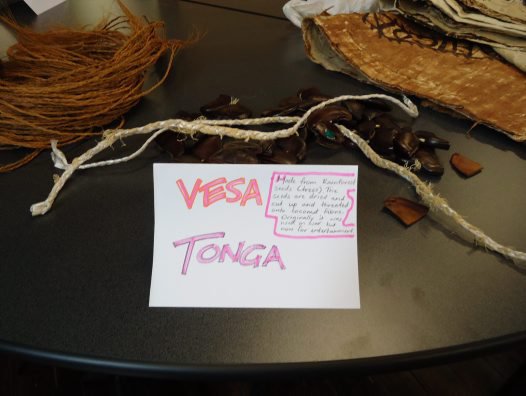Reflections on the Pop-Up Museum
When I first came up with the idea of the Pop-Up Museum, my advisor asked me, “What are you going to do with it?” I would never have imagined that I would be holding a pop-up in collaboration with the Australian Museum, but I’m really glad I was given the opportunity to do so.
So, what have I learned from this experience? Sometimes I came up with more questions than conclusions, but overall, these are my main takeaways:
Collaboration is awesome
While the “pop-up museum” is technically my idea, it would not have worked, nor would it have been as successful, without the major input and organization of the Australian Museum staff. This experience has furthered my belief that fair and balanced collaboration is vital to creating meaningful experiences for our audiences.

© Australian Museum
Inviting a specific audience worked well
So far in my experimenting, I have been inviting the general public to attend a pop-up. This time, Lynda organized to have a group of students from the Granville Boys School attend, which worked well. It seemed to add a special something extra, as the students already all knew each other and were therefore able to share their stories both with those from outside the museum and with each other. I am interested to see how it would work with other “established” audiences, such as senior citizen communities.
The question I will keep in mind, though, when moving forward with specific audiences, is: Will this audience benefit from the pop-up? I think the key here may be that the Granville students had a lot to say and share, and the theme was tailored to their needs, so it worked well.
Each pop-up is unique
I came into this pop-up thinking two hours would be just enough time, but it turns out that an hour and a half was more than enough. Additionally, the music played in the background and the food the museum provided greatly added to the overall atmosphere. It seems as though there is no way to predict what each pop-up will be like, which I don’t necessarily think is a negative, it’s just the nature of the concept.
Conversations happen
I observed both the Granville students and museum staff having conversations about the objects they brought. This idea of personally connecting with someone else through their own objects and stories is especially compelling to me. What is it about creating conversations that allowed me to better understand the person I was talking to? Why did I leave each conversation feeling like I had learned something about another person? This is a question I want to pursue in my master’s thesis, especially as the field of learning sciences has become very involved in museum studies (at least in America). Are conversations another venue for people to learn in museums?
Is the Pop-Up Museum a form of public service?
While I need to do further research and evaluation on this subject, I believe that the Pop-Up Museum can provide a public service. The students from Granville were able to express themselves, their ideas, and their identities. I feel like providing them a venue to do this and to celebrate them both as individuals and as a community is therefore a form of meaningful public service.
Further research and evaluation is needed
I have a long journey ahead of me, in regards to doing more academic research, evaluation, and experimentation, in order to make sure that this pop-up museum idea is a viable way to engage audiences. I still have my advisor's question in mind, and I do often ask myself, "What am I going to do with this?" What I am sure about is that this concept should be pursued as an event that creates conversation between participants and enriches the overall museum experience.
Thank you again to everyone at the Australian Museum and at the Granville Boys School for working with me in this experiment. Your participation and support are truly appreciated, and I hope you had as good a time as I did.






